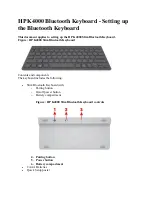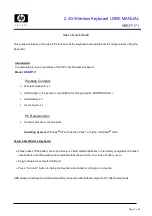
12
Getting Acquainted with the JUPITER-80
How the Sound Generator is Organized
The sound generator is organized into units of sounds called “Registrations,” “Live Sets,” and “tones.”
The JUPITER-80’s sound generator
Solo Part
Tone
Registration
Upper Part
Percussion Part
Tone 4
Lower Part
Tone 1
Tone 2
Tone 3
Tone 4
Live Set
Tone 1
Tone 2
Tone 3
Tone 4
Live Set
MFX 1
MFX 1
MFX 2
MFX 2
MFX 3
MFX 3
MFX 4
MFX 4
Reverb
Comp
Comp
Equalizer
Equalizer
Delay
Delay
Reverb
MASTER
EQ
Reverb
Harmony
Intelligence
Arpeggio
Audio data flow
Performance data flow
What is a Tone?
Although a Tone is the smallest unit of sound handled by the JUPITER-80, it boasts an extravagantly powerful structure based on SuperNATURAL
sounds. “SuperNATURAL Acoustic Tones” not only reproduce the sounds of an acoustic instrument, but also automatically analyze—in a way
that’s appropriate for each different tone—the differences between the phrases, chords, and melodies played by the performer, and deliver the
responsiveness that is characteristic of that specific acoustic instrument. Starting with the SuperNATURAL piano, each of these sounds brings you the
highest possible level of expressive power that has been developed for the sound engines of earlier Roland products.
“SuperNATURAL Synth Tones” can be combined as elements in a Live Set, and can also be edited in detail for each tone and saved. Since a single Synth
Tone contains three sets of oscillator, filter, amp, and LFO, it packs a formidable amount of synthesis power. The oscillator contains not only analog
waveforms but also PCM waveforms, and you can use the graphic screen to edit them intuitively, creating a nearly infinite range of synth sounds.
What is a Live Set?
In the JUPITER-80’s sound engine, the smallest unit of sound is the “tone”; each tone consists of a SuperNATURAL sound.
Up to four tones can be layered to create impressive and richly expressive sounds.
Such a combination can be saved as a “Live Set,” and a different Live Set can be used for the Upper Part and the Lower Part.
By layering two Live Sets, you can easily create thick, stacked sounds that would have been difficult to create on any previous PCM synthesizer.
The basic method of creating sound on the JUPITER-80 is to edit a Live Set by combining these powerful tones.
What is a Registration?
The combination of sounds assigned to the Upper Part, Lower Part, Solo Part, and Percussion Part, together with settings for the JUPITER-80 itself, can
be saved as a single “Registration.”
A Registration can be called up instantly, allowing you to switch sounds as appropriate for the song you’re playing, or to instantly get the settings you
need for live performance or studio recording.
Содержание Jupiter-80
Страница 1: ......
Страница 70: ...70 MEMO ...
Страница 88: ...88 MEMO ...
Страница 106: ...106 For EU Countries For China ...
Страница 108: ... 5 1 0 0 0 2 0 6 8 2 0 1 ...













































